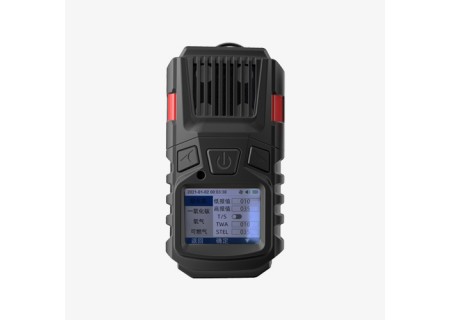Difference between TVOC VS VOC
-500x500.jpg)
VOC stands for volatile organic compounds. The full name in English is volatile organic compounds. it is one of the most common air pollutants in non-industrial environments. Common VOC, there are styrene, propylene glycol, glycol, phenol, toluene, ethylbenzene, xylene, formaldehyde and so on.
VOC refers to the weight of organic volatile matter contained in 1 liter of paint, while TVOC refers to the weight of organic volatile matter contained in 1 liter of paint in the substance of water removed, at present, the volume solid content of most of the interior paints is about 35%-40% or so, and when the TVOC limit is 100g/L, the corresponding VOC is about (39-44)g/L. Therefore; the limit of TVOC in the EMS is much higher than that of VOC in the national standard. standard is much stricter than the limited standard of VOC in the national standard. In fact, even with 100% solids, the VOC is still greater than the TVOC, which shows that it is more straightforward to control the TVOC in the formulation than the VOC.
Volatile organic compounds, commonly used VOC, it is Volatile Organic Compound three words of the first letter of the acronym, but sometimes also with the total volatile organic compounds TVOC to express.
VOC toxicity can be summarized as non-specific and specific toxicity, with non-specific toxicity manifesting itself in the form of headaches, lack of concentration, boredom, fatigue, etc., and specific toxicity leading to the development of allergies and cancer.
VOCs have a huge impact on human health. When the VOC in the living room reaches a certain concentration, for a short period of time people will feel headache, nausea, vomiting, fatigue, etc., and in severe cases, convulsions, coma, and will harm the human liver, kidneys, brain and nervous system, resulting in memory loss and other serious consequences.
According to experts, paints used in the process of home decoration and renovation are one of the main sources of indoor VOC. Therefore, all countries have made restrictions on the VOC content in paints and other decorative materials.
Paint national standard for interior wall paint VOC content requirements are: not higher than 200 grams per liter.
According to the introduction, foreign developed countries on the paint in the VOC content of the restrictions are very strict. In terms of the European Union, a class (matte class) coatings shall not be higher than 30 grams per liter, the second class (light class) shall not be higher than 200 grams per liter; and in the country, the State Environmental Protection Administration of the latest release of waterborne interior paints Environmental Labeling Product Certification Requirements, the VOC shall not be higher than 100 grams per liter; Beijing Municipality formulated the “indoor decorative coatings, safety, health and quality evaluation of the rules,” the VOC requirements must be in the The requirement for VOC is below 125 grams per liter.
VOCs: Volatile Organic Compounds (VOCs)
In 1989, WHO defined VOCs is a group of boiling point from 50 ℃ to 260 ℃, saturated vapor pressure at room temperature more than 133.322Pa volatile compounds. Its main components are hydrocarbons, oxygen hydrocarbons, halogenated hydrocarbons, nitrogen hydrocarbons and sulfur hydrocarbons, low-boiling point polycyclic aromatic hydrocarbons, etc. VOCs are characterized by a lower evaporation temperature than water. Most synthetic chemicals found in water, such as pesticides and herbicides, are VOCs
Major Sources
The main sources of VOCs, outdoors, are from fuel combustion and transportation, while indoors they are mainly from combustion products such as coal and natural gas burning, smoke from smoking, heating and cooking, and emissions from building and decorating materials, furniture, household appliances, cleaning agents, and the human body itself. In the process of interior decoration, VOCs mainly come from paints, coatings and adhesives. General paint VOC content in 0.4 to 1.0mg?m3. As VOC has a strong volatility, in general, paint construction after 10 hours, can be volatile 90%, while the solvent in the VOC in the paint drying process only 25% of the total amount of release.
Since benzene and benzene series are important components of TVOC, some people only test TVOC without testing benzene as well as benzene series; others only test total benzene without testing VOC; and some units test both. This mainly depends on the requirements and conditions. Detection of TVOC technical equipment conditions require high, usually using gas chromatography, but also Fourier transform infrared spectroscopy, fluorescence spectroscopy, ion chromatography and reflectance interference spectroscopy.
Indoor VOC concentration in the 0.16mg?m3 to 0.3mg?m3, basically harmless to human health, but in the renovation is often to exceed, especially improper decoration.
Preventive measures
Prevent the harm of VOC, mainly from the source, eliminate non-environmental building materials; secondly, often ventilate the air, and even heating and baking, so that the VOC release to accelerate; thirdly, if necessary, the installation of air purifiers with activated charcoal; fourthly, it is best to confirm that the VOC does not exceed the standard after the renovation by the test, and ventilate the air for one month after the move in; fifthly, the installation of TVOC Sensor, real-time monitoring of the indoor VOC concentration, VOC VOC concentration is too high timely ventilation. Sixth, put some flowers that can absorb harmful substances, such as hanging orchids, aloe vera, tiger orchids, ivy and asparagus. In addition, in the living room or courtyard can be placed in the moon season, azalea, tulips, lilies and orang-utan wood, etc., which can absorb a large number of VOC, but they should not be placed in the bedroom, because they have some other negative factors.
Total Volatile Organic Compounds.
TVOC is a value defined by the European Union to characterize the total amount of VOCs. In other words, VOC is a large group of compounds; TVOC is a value used to characterize the total amount of VOCs when testing, especially in indoor environments.







-450x320.jpg)



-450x320.jpg)